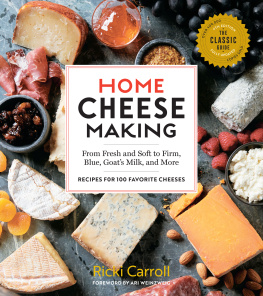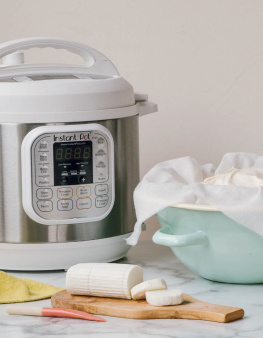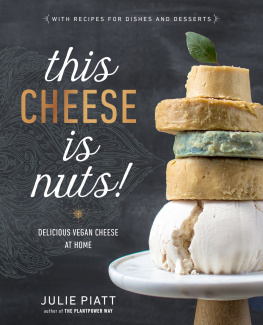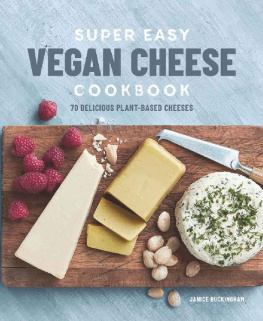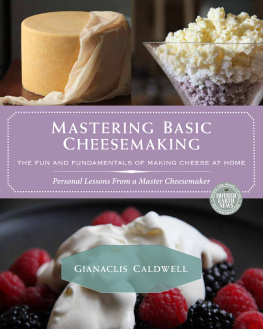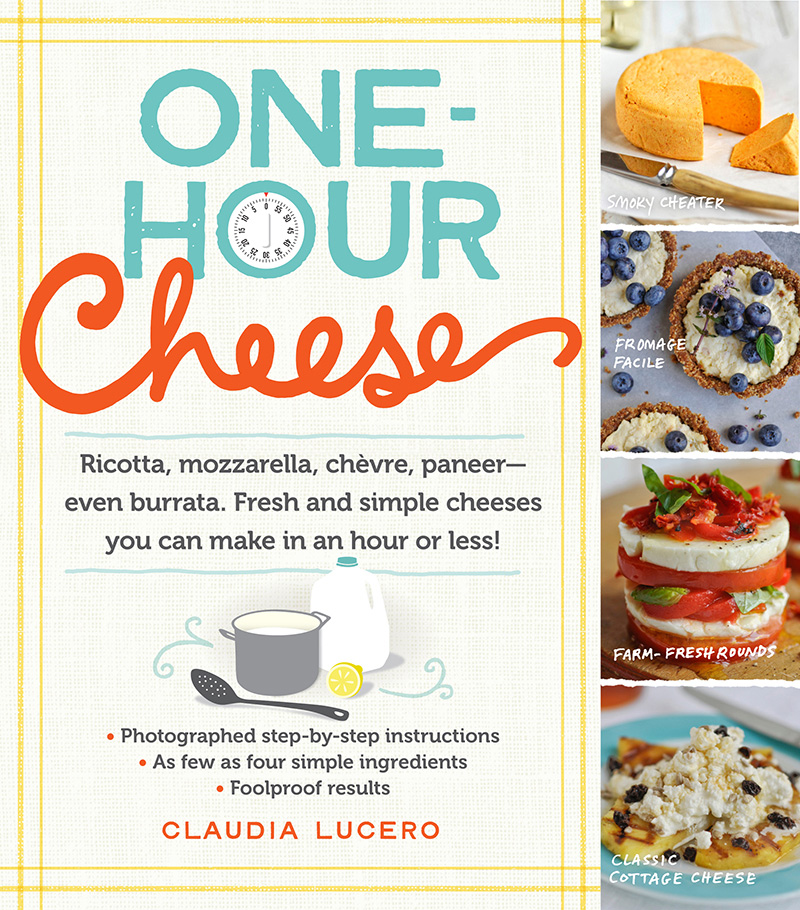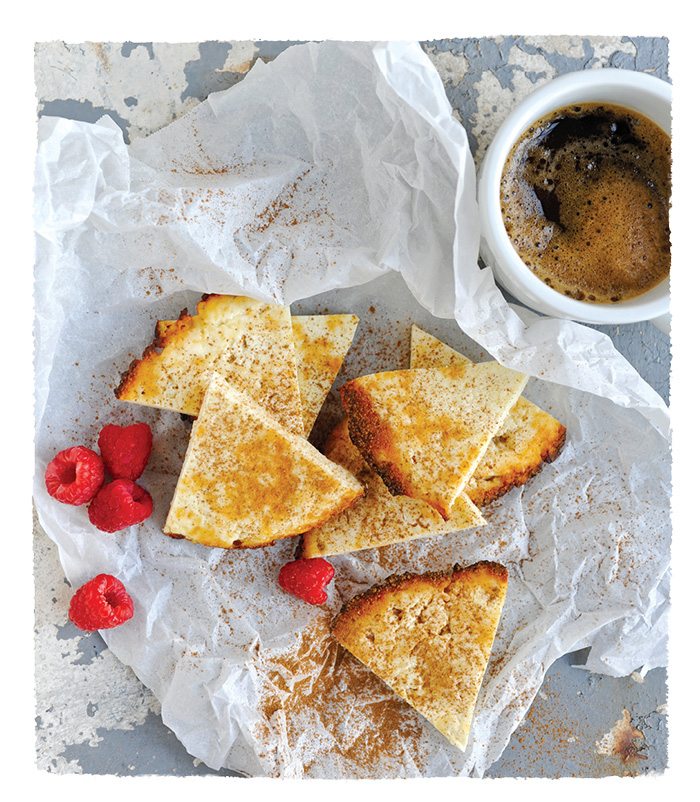One-Hour Cheese
Ricotta, mozzarella, chvre, paneereven burrata. Fresh and simple cheeses you can make in an hour or less!
Claudia Lucero
Founder of Urban Cheesecraft and Creator of DIY Cheese Kits
Workman Publishing, New York
Dedication
For and with Jeff: We did it, love! Now, lets get some sleep.
And to our nieces, Monique, Bianca, and Jocelynnthe best kitchen helpers!
Contents
Introduction
Cheese in one hour? you ask, Is it really possible? Yes, and in some cases, well under an hour. I mean it, as in ready-to-eat, fresh cheese, really! And though I wish I were here to blow your minds, its not actually anything new. Our current society is not the only one that has needed to juggle busy schedules and prepare meals quickly. People have been making simple cheeses for thousands of years, and without the aid of manufactured molds, presses, and other complex equipment.
The fact that many traditional cheeses can be made easily and quickly isnt widely known, simply because many of us have lost touch with our food and its origins in general. It was not so long ago that our ancestors baked bread daily, had a pot of stock continuously simmering on the back of the stove, and regularly prepared simple dairy products like homemade butter. Making yogurt and cheese was necessary for preserving that precious milkand its nutrientsa while longer.
It was armed with the knowledge that human beings have been making cheese for millennia, before bleach and electricity, that I taught myself to make cheese. Now I want to teach you.
My DIY Cheese Education
The seed was planted when I was in high school and waiting tables in an Indian restaurant in San Diego, California. I didnt work there long, but in my short tenure, I learned how to make the delicious housemade paneer. I was about seventeen years old, but already way into cooking and old-fashioned skills by that time (e.g., nine-year-old me and ten senior citizens in a macram class). I moved on to other pursuits, but I tucked away my cheesemaking skills until many, many years later.
In 2006, my partner, Jeff, and I moved to Portland, Oregon. Fed up with a life of working very hard to afford a tiny apartment in an expensive town and never paying down student loans, we moved in search of a better life, more about quality than quantity. A reset. We wanted to buy a home with a little land to grow vegetables (Id been reading about it in Organic Gardening magazine for more than five years at this point!), but until we paid off the student loans, wed be living in an apartment. Unable to grow our own food, we signed up for a farm share of veggies.
The journey had finally begun! And oh boy, when it was time for beets and green beans, we couldnt keep up. So I found information on fermented pickles, sauerkraut, and yogurt in what looked like a semidormant online homesteading magazine and I hungrily pored over the recipes. Among those were cheese recipes. My memory shot back to that first paneer, and my interest was piqued! Our chilly, rainy weather in Portland was the perfect breeding ground for my new hobby, so I couldnt wait to start, but I was a little stuck.
Recipes called for things Id never heard of and I could not find locally: rennet, citric acid, cultures, and calcium chloride, aside from equipment like molds, butter muslin, and much more. There were several types of rennet: animal, vegetarian, liquid, tablets... yikes! It was more than a little overwhelming, so I started with what I could wrap my head around: hot milk and lemon juice... the simple beginnings of my old buddy paneer. I made paneer several times and gained some courageit was my gateway cheese!
If the restaurant of my youth had been making their own paneer daily (a truth that previously astounded me), it started to seem reasonable that these other cheeses might be easier to make than I was assuming, as well. Besides, cheese is an ancient food, I reminded myself. After an exhaustive and discouraging search for supplies and classes in Portland (this has changed drastically in more recent years), I experimented with different supplies I found online and made my first rustic cheeses.
Because I didnt want to wait a year to find out if I failed, I was very selective and focused on cheeses that did not require aging. I graduated from paneer to ricotta, mozzarella, queso blanco, and chvre. I simplified, merged, and tweaked recipes to suit my needs. I cut recipes down to one-gallon batches, when possible. I cut out additives or steps that seemed fussy. The results were sometimes surprising (always edible), but after a little time, I learned a lot and I was regularly making unbelievably delicious cheeses! I cant explain the excitement I felt the first time I stretched mozzarella; I literally ran to Jeff to show him the melty rope of curd. We ate that entire batch of warm cheese within minutesyep, thats about a pound and a half. You simply have never tasted anything as succulent as your own homemade warm mozzarella.
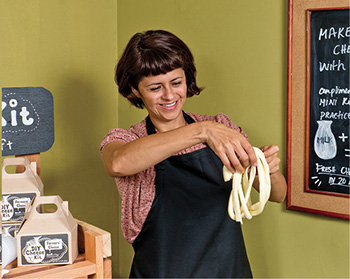
Stretching hot curds can be therapeuticand the resulting cheese is delicious.
Needless to say, it was a thrill, scrumptious, and faster than baking cookies! Eureka! I felt as if I was the first person to figure this out, and I wanted to tell the world! After sharing the results of my first misshapen cheese attempts with friends and family, however, I got great feedback and interest but it was accompanied by a lot of assumptions: Dont I need an aging cave? But I need raw milk, right? Oh no, but what about scary mold and food poisoning? The underlying assumption seemed to be, if its delicious and uncommon, it must take forever and be super hard to make, right? I was having flashbacks to my own initial doubt, and the questions came up again and again. Making simple cheese at home was clearly a lost skill.
I set out to change these assumptions by teaching people how to make cheese the easy way. Thats when I started my DIY cheese kit company, Urban Cheesecrafta pursuit that led me here, writing to you in this book.
Paneer was my gateway cheese... [then] I graduated from paneer to ricotta, mozzarella, queso blanco, and chvre.
About One-Hour Cheese
If youre looking for more complex, aged cheeses (of the stinky variety), there are plenty of resources available, but this is not one. The recipes youll find here are fresh, simple cheeses that look and taste (and smell) fabulous, and offer endless customization options. When you make these cheeses, you can still have energy to host make-your-own-pizza nights and taco Tuesdaysat which you will be able to share your own delicious homemade cheese! Until you share the secret, not one person will realize that you made cheese in an hour. And since Im in the business of reclaiming lost skills, I hope you do share the secret.
All of the cheesemaking techniques shared in this book are based on traditional methods: You will heat milk, add coagulant, drain, mill, salt, and press curds just like humans have done for thousands and thousands of years.
As grounded as these techniques are in cheesemaking tradition, the recipes are all fresh, modern interpretations of the classics. They came from a great deal of experimentation, which I encourage you to do as soon as you feel comfortable with the techniques. Ive learned that cheesemakers are curious folks by necessity (its a science and an art after all!); theyve been creating and re-creating cheeses throughout history. Like them, we can invent, play, and push, because in the end, were just helping milk live a little bit longer and delighting ourselves in the process. No need to overthink it.



